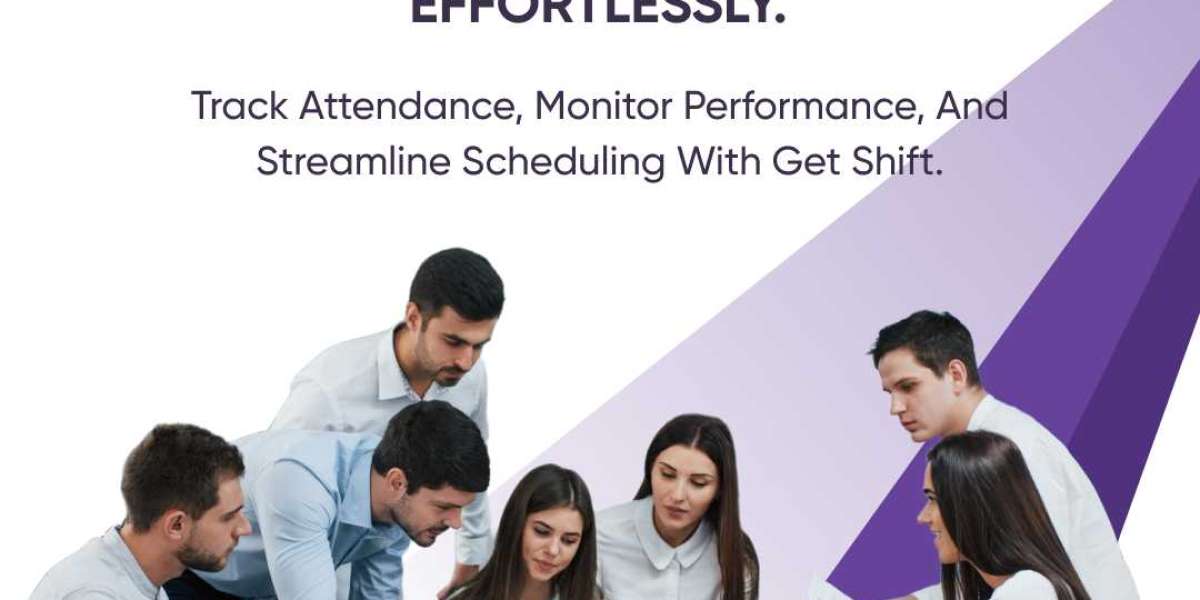In today's fast-paced work environment, managing employees is no longer just about tracking attendance and calculating salaries. Businesses need better tools to manage people, improve productivity, and streamline HR tasks. This is where employee management software comes in. It helps companies handle everything related to their workforce in a more organized and efficient way.
In this blog, we'll explore what employee management software is, what features to look for, how it benefits different types of businesses, and why it's becoming a must-have for companies of all sizes.
What is Employee Management Software?
Employee management software is a digital platform that helps companies manage various HR functions such as attendance tracking, performance evaluation, payroll, employee records, and more. It acts as a centralized system where both managers and employees can access important information, reducing manual work and increasing transparency.
It doesn't matter if you run a small business or a large company with hundreds of employees this type of software can simplify your HR processes and save time.
Key Features of Employee Management Software
Here are some of the most common and useful features you'll find in a good employee management system:
1. Attendance and Time Tracking
Tracking when employees start and end their workday is important. Most tools come with built-in time tracking, biometric integration, or mobile check-in/check-out options.
2. Leave Management
Employees can apply for leave, and managers can approve or reject it all within the platform. It also keeps records of leave balances, holidays, and more.
3. Employee Database
A secure digital file cabinet for storing employee details like personal info, joining date, job title, emergency contacts, and ID proofs.
4. Payroll Integration
Employee management software often includes or integrates with payroll systems to ensure accurate salary processing, tax deductions, and payslip generation.
5. Performance Tracking
Helps evaluate employee performance through feedback, appraisals, and KPIs. Some tools even allow peer-to-peer reviews.
6. Task and Project Management
Assign tasks, track deadlines, and monitor project progress. This is especially helpful for teams that work remotely or across different locations.
7. Communication Tools
Some platforms offer internal chat systems or notifications to improve team communication and reduce dependency on external apps.
Benefits of Using Employee Management Software
Now that we’ve covered the features, let’s talk about why using such a system is actually worth it.
1. Saves Time
Manual HR tasks like calculating attendance, generating payroll, or updating employee records take hours. Software automates these processes, saving a lot of time for HR teams and managers.
2. Reduces Errors
Manual data entry can lead to mistakes in salaries, leave balances, or personal information. Software reduces these risks with automatic calculations and consistent record keeping.
3. Centralizes Data
Everything is stored in one place. Whether it’s documents, leave history, or salary slips, managers and employees can access data easily without digging through emails or spreadsheets.
4. Improves Compliance
Keeping track of labor laws, tax regulations, and employee rights is easier with built-in compliance tools that ensure your company follows legal rules.
5. Supports Remote Work
With cloud-based employee management tools, companies can manage their teams from anywhere. Employees can mark attendance, apply for leave, and view tasks from their phones or laptops.
Employee Management Software vs. Employee Engagement Software
While both tools may seem similar, they serve slightly different purposes. Employee engagement software focuses more on how connected, motivated, and satisfied employees feel in the workplace. It includes features like pulse surveys, feedback systems, and recognition tools.
On the other hand, employee management software handles administrative and operational tasks like scheduling, payroll, and performance management.
That said, some platforms combine both, offering a complete solution that improves both management and engagement. If you want happier employees and smoother HR operations, choosing a system that supports both areas can be a great move.
How Employee Management Software Helps Different Industries
Let’s look at how different sectors benefit from using this kind of software:
1. IT and Tech Companies
Tech firms use the software to manage remote teams, track project progress, and automate performance reviews. It also helps with onboarding new employees.
2. Retail and Hospitality
These businesses often deal with shift-based work. The employee scheduling feature becomes very useful here, allowing managers to assign shifts, handle last-minute changes, and avoid scheduling conflicts.
3. Manufacturing
Safety training, shift management, and compliance are key in manufacturing. A good software solution helps in keeping track of certifications, work hours, and employee availability.
4. Healthcare
In hospitals and clinics, managing nurses, doctors, and support staff across various shifts can be challenging. Employee management systems offer clear scheduling and real-time updates to make operations smoother.
5. Education
Schools and universities use these tools to track teacher attendance, manage payroll, and even schedule classes or meetings with ease.
Employee Scheduling Made Simple
One of the most helpful tools in modern employee management platforms is employee scheduling. Manually creating and updating employee schedules is time-consuming and often leads to mistakes or confusion.
Here’s how software helps:
You can create daily, weekly, or monthly shift schedules.
Employees get real-time updates on their assigned shifts.
Automated alerts reduce missed shifts and miscommunication.
Some platforms even let employees swap shifts with manager approval.
This not only saves time but also helps maintain a better work-life balance for employees, leading to fewer absences and higher job satisfaction.
What to Look for in Employee Management Software
Choosing the right platform depends on your company’s size, needs, and budget. Here are some things to consider before making a decision:
User-Friendly Interface: Your team should find it easy to use without too much training.
Cloud-Based Access: This ensures you can manage operations even when working remotely.
Customizable Features: Pick a solution that fits your unique workflow and industry needs.
Scalability: Make sure it can grow with your company.
Mobile App Support: Handy for employees who work outside the office or on the go.
Customer Support: Quick support helps in solving issues without wasting time.
Top Trends in Employee Management Software
As businesses evolve, so do their needs. Here are some trends shaping the future of employee management:
1. AI and Automation
Many platforms now use AI to predict employee turnover, suggest scheduling improvements, or analyze engagement patterns.
2. Integration with Other Tools
Seamless integration with tools like Zoom, Slack, or accounting software helps avoid repetitive data entry.
3. Focus on Employee Wellness
Along with engagement, software now includes mental health check-ins, wellness programs, and stress-tracking features.
4. Mobile-First Approach
As more employees work from their phones, mobile-friendly platforms are becoming essential.
Final Thoughts
Managing employees effectively is one of the biggest challenges businesses face today. With the help of employee management software, companies can reduce paperwork, save time, improve accuracy, and create a better experience for everyone from HR teams to individual employees.
If your business is still relying on spreadsheets or old tools, it might be time to switch. Modern software doesn't just make work easier—it makes your entire team more connected, productive, and happy.
And when combined with tools like employee engagement software and employee scheduling , you get a full HR solution that can take your business to the next level.







